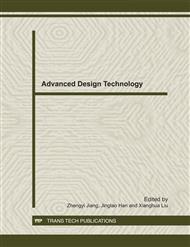p.164
p.169
p.173
p.179
p.184
p.188
p.192
p.196
p.203
Residual Stress Simulation of a Single Bead-on-Plate with Modified High-Cr Ferrite Heat-Resistant Steel
Abstract:
In this paper, residual stress modeling using the finite element (FE) method is presented. The heat source is represented by the Goldak’s double-ellipsoid model. The Koistinen–Marburger relationship was employed here in order to trace the martensite fraction in the material during martensitie transformation in residual stress analysis. The relationship between stresses and martensite fraction are presented. Stress distribution is affected by matensite transformation.
Info:
Periodical:
Pages:
184-187
Citation:
Online since:
December 2011
Authors:
Keywords:
Price:
Сopyright:
© 2012 Trans Tech Publications Ltd. All Rights Reserved
Share:
Citation:


